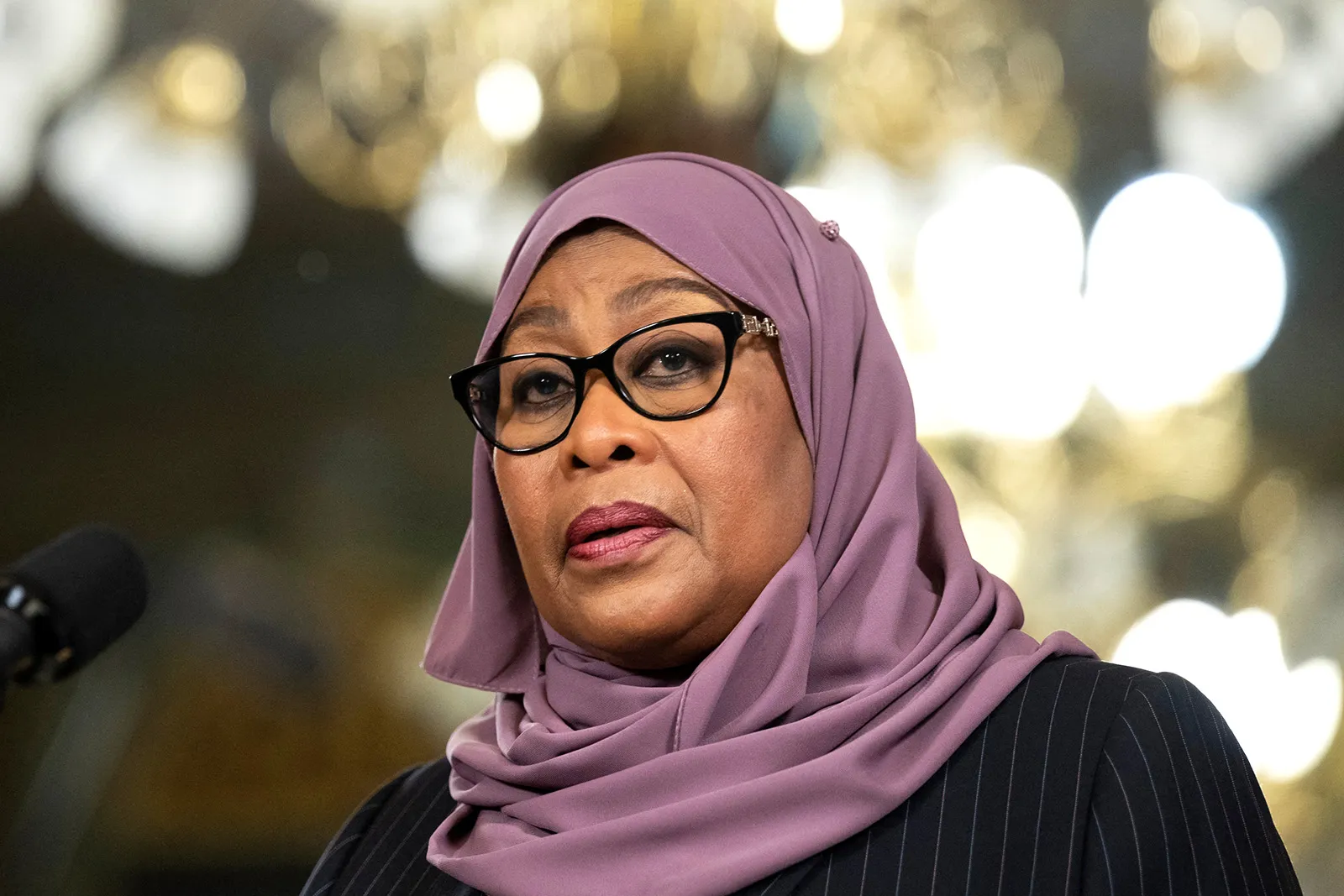
Forests cover almost one-third of the Earth’s land area, providing crucial benefits for both people and the environment. They protect soil and water, regulate the climate and safeguard biodiversity.
Trees and other woody plants - shrubs, bamboos and rattans - supply people with essential raw materials, such as wood and fibres, produce food and medicine, mitigate climate change and support the livelihoods of millions of people worldwide.
But what makes forests and trees resilient and adaptable? The answer lies in their genetic diversity.
Just as humans inherit traits from their parents, trees also pass down unique genetic characteristics that help them survive in different environments.
For example, some trees might be better at resisting pests, and others might be better able to survive dry times.
The greater the genetic variation in a forest, the better it can adapt to challenges such as climate change, fire and disease outbreaks.
However, forest genetic resources are under pressure from unsustainable practices, climate change and other threats. To protect forests for future generations, we must safeguard and sustainably use their genetic diversity.
Let’s take a closer look at the current situation and explore how we can turn over a new leaf in the conservation, sustainable use and development of forest genetic resources
- Mavhunga puts DeMbare into Chibuku quarterfinals
- Bulls to charge into Zimbabwe gold stocks
- Ndiraya concerned as goals dry up
- Letters: How solar power is transforming African farms
Keep Reading
Zimbabwe's forests are not merely collections of trees; they are intricate ecosystems brimming with genetic diversity, a biological library meticulously curated by nature over millennia.
This genetic wealth, often overlooked in the broader conversation about deforestation, represents the fundamental building blocks of forest resilience and adaptability.
Safeguarding these forest genetic resources (FGR) is not just a scientific imperative but an urgent necessity for Zimbabwe, crucial for the long-term conservation of its forests and the well-being of future generations.
The concept of FGR encompasses the diversity within species (provenances, races, and individual trees) and between species of forest trees and associated flora and fauna.
This genetic variation allows forests to adapt to changing environmental conditions, resist pests and diseases, and maintain their productivity.
Zimbabwe is highly vulnerable to climate change impacts such as prolonged droughts, unpredictable rainfall patterns, and increased frequency of extreme weather events, the adaptive capacity conferred by genetic diversity is invaluable.
Forests with a broad genetic base are more likely to survive and thrive under stress, ensuring their continued provision of essential ecosystem services.
The threats to Zimbabwe's FGR are multifaceted and escalating.
Deforestation driven by agricultural expansion, unsustainable charcoal production, illegal logging, and infrastructural development directly erodes genetic diversity by eliminating populations and reducing the overall gene pool.
Habitat fragmentation further isolates remaining forest patches, hindering gene flow and increasing the risk of inbreeding, which can lead to reduced fitness and adaptive potential.
Climate change itself poses a direct threat, as species and provenances unable to adapt to rapidly shifting conditions may face local extinction.
Furthermore, the introduction of exotic species, while sometimes offering short-term economic benefits, can outcompete native species and contaminate their gene pools through hybridisation, further diminishing indigenous genetic integrity.
The consequences of neglecting FGR conservation are dire. A reduction in genetic diversity makes forests more susceptible to widespread damage from pests and diseases, potentially leading to ecological collapse.
It diminishes their capacity to adapt to future environmental changes, compromising their long-term survival.
Economically, the loss of FGR means a reduction in potential sources of valuable timber, non-timber forest products, and genetic material for tree improvement programs crucial for sustainable forestry.
Culturally, the erosion of unique tree species and forest types represents an irreplaceable loss of natural heritage and traditional knowledge systems intrinsically linked to these resources.
For Zimbabwe, prioritising the safeguarding of FGR is a pragmatic and forward-thinking strategy for forest conservation.
This endeavour requires a comprehensive approach encompassing in-situ and ex-situ conservation measures, robust policy frameworks, and active community engagement.
In-situ conservation, protecting genetic diversity within natural forest ecosystems, is paramount.
This involves strengthening the management and protection of existing protected areas, such as national parks and forest reserves, to ensure the integrity of their genetic resources.
Identifying and establishing new areas of high genetic diversity genetic reserves should also be a priority.
Sustainable forest management practices, including selective logging that preserves genetic variation and avoids high-grading, are crucial for managing production forests in a way that conserves FGR.
Furthermore, promoting natural regeneration and assisted natural regeneration over extensive monoculture plantations can help maintain the genetic mosaic of indigenous forests.
Ex-situ conservation complements in-situ efforts by preserving genetic material outside its natural habitat.
This includes establishing seed banks for important and endangered tree species, developing arboreta and botanical gardens that host genetically diverse populations, and creating living gene banks through provenance trials and clonal archives. These ex-situ collections serve as a vital safety net, providing material for restoration efforts, scientific research, and breeding programs should in-situ populations face severe threats.
Given Zimbabwe's rich woodlands, particular attention should be paid to collecting and preserving the genetic diversity of dominant and keystone miombo species.
Beyond these technical approaches, a robust policy and legislative framework is essential.
This includes strengthening existing environmental laws to specifically address FGR conservation, developing national strategies and action plans for FGR, and integrating FGR considerations into broader land-use planning and agricultural policies. Cross-sectoral collaboration between forestry, agriculture, environment, and research institutions is vital for effective implementation.
Crucially, the success of FGR conservation in Zimbabwe hinges on the active involvement and empowerment of local communities. Many rural communities are custodians of traditional knowledge about local tree species and their uses.
Integrating this knowledge into conservation strategies, promoting community-based natural resource management, and ensuring that communities benefit from sustainable forest practices can foster a sense of ownership and responsibility for FGR. Agroforestry systems, which integrate trees into agricultural landscapes, can also play a significant role in conserving FGR outside of conventional forest areas while providing food security and economic benefits.
Investing in research and development is another critical component. Understanding the genetic diversity of Zimbabwe's key forest species, identifying vulnerable populations, and researching optimal conservation and restoration techniques are essential. This includes studies on reproductive biology, population genetics, and the impacts of climate change on specific tree species. Building capacity within forestry institutions and among local communities in FGR assessment, monitoring, and management is also crucial.
Safeguarding forest genetic resources for future generations is not an abstract scientific concept; it is a pragmatic and indispensable strategy for conserving Zimbabwe's forests in the face of escalating environmental pressures. It is about ensuring the resilience and adaptability of these vital ecosystems, securing the myriad benefits they provide, and preserving an irreplaceable natural heritage. By integrating in-situ and ex-situ conservation, enacting supportive policies, empowering communities, and investing in research, Zimbabwe can ensure that its forests continue to thrive, providing ecological stability, economic opportunities, and cultural enrichment for generations to come.











